
大家好,我是小五🐶
欢迎来到「Pandas案例精进」专栏,点击蓝字查看全部
前文回顾:Pandas案例精进 | 结构化数据非等值范围查找 ①
本文是承接上一篇的实战案例,没看过的小伙伴建议先点击👆上方链接查看前文
Pandas案例需求
需求如下:

该问题最核心的解题思路是按照地区代码先将两张表关联起来,然后按照重量是否在指定的区间筛选出符合条件的记录。不同的解法实际区别也是,如何进行表关联,如何进行关联后的过滤。
上文的简化写法
简化后:
import pandas as pd
product = pd.read_excel('sample.xlsx', sheet_name='A')
cost = pd.read_excel('sample.xlsx', sheet_name='B')
fi_cost = cost.set_index(['地区代码','地区缩写']).stack().reset_index()
result = pd.merge(product, fi_cost, on='地区代码', how='left')
result.columns = ['产品ID', '地区代码', '重量', '地区缩写', '重量区间', '价格']
result[['最低区间', '最高区间']] = result['重量区间'].str.split('~', expand=True).astype(float)
result.query("最低区间<=`重量`<=最高区间")
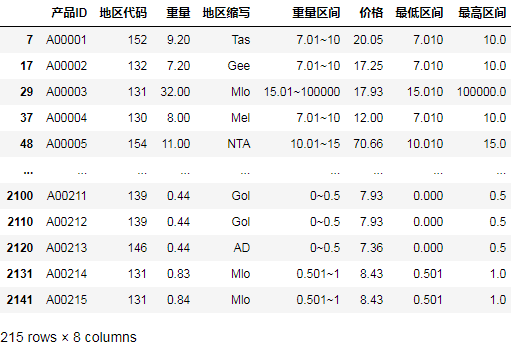
顺序查找匹配
考虑到直接merge会产生笛卡尔积,多消耗N倍的内存,所以下面采用筛选连接法,执行耗时比merge连接稍微长点,但减少了内存消耗。
首先读取数据:
import pandas as pd
from IPython.core.interactiveshell import InteractiveShell
InteractiveShell.ast_node_interactivity = 'all'
product = pd.read_excel('sample.xlsx', sheet_name='A')
cost = pd.read_excel('sample.xlsx', sheet_name='B')
预览数据:
product.head()
cost.head()
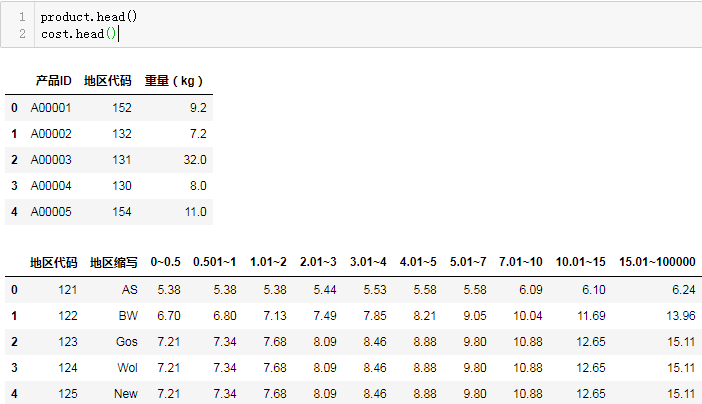
下面我们将价格表由"宽格式"旋转为"长格式"方便匹配:
fi_cost = cost.melt(id_vars=["地区代码", "地区缩写"], var_name="重量区间", value_name='价格')
fi_cost
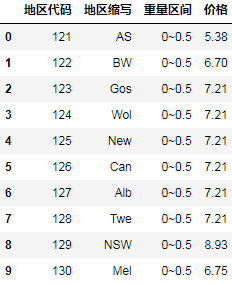
观察价格区间00.5, 0.5011, 1.012, 2.013, 3.014, 4.015, 5.017, 7.0110, 10.0115, 15.01100000我们完全可以只取前面的数字或只取后面的数字,理解为一个前闭后开或前开后闭的区间,我取重量区间的最大值来表示区间:
fi_cost.重量区间 = fi_cost.重量区间.str.split("~").str[1].astype("float")
fi_cost.sort_values(["地区代码", "重量区间"], inplace=True, ignore_index=True)
fi_cost.head(10)
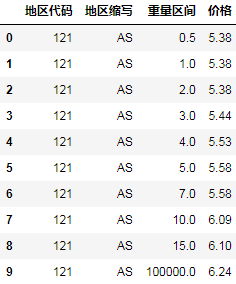
测试对第一个产品,取出对应的地区价格表:
fi_cost_g = fi_cost.groupby("地区代码")
for product_id, area_id, weight in product.values:
print(product_id, area_id, weight)
cost_table = fi_cost_g.get_group(area_id)
display(cost_table)
break

下面我们继续测试根据重量筛选出对应的价格:
fi_cost_g = fi_cost.groupby("地区代码")[["地区缩写", "重量区间", "价格"]]
for product_id, area_id, weight in product.values:
print(product_id, area_id, weight)
cost_table = fi_cost_g.get_group(area_id)
display(cost_table)
for area, weight_cost, price in cost_table.values:
if weight <= weight_cost:
print(area, price)
break
break
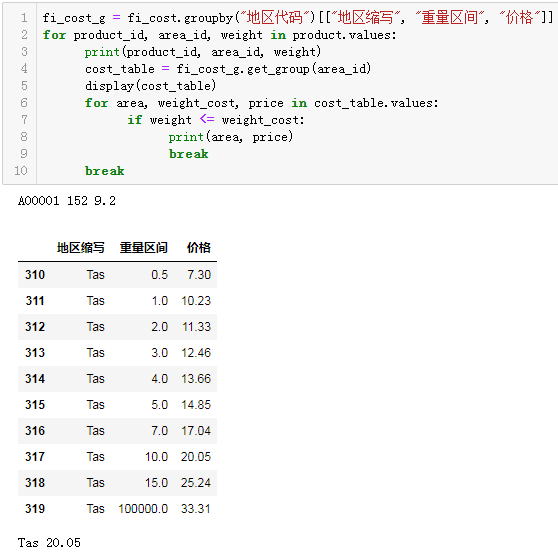
可以看到已经顺利的匹配出对应的价格是20.05。
于是完善最终代码为:
result = []
fi_cost_g = fi_cost.groupby("地区代码")[["地区缩写", "重量区间", "价格"]]
for product_id, area_id, weight in product.values:
cost_table = fi_cost_g.get_group(area_id)
for area, weight_cost, price in cost_table.values:
if weight <= weight_cost:
break
result.append((product_id, area_id, area, weight, price))
result = pd.DataFrame(result, columns=["产品ID", "地区代码", "地区缩写", "重量(kg)", "价格"])
result
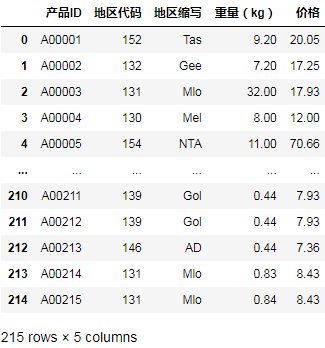
成功匹配出每个产品对应的地区简写和价格。
顺序查找匹配的完整代码为:
import pandas as pd
product = pd.read_excel('sample.xlsx', sheet_name='A')
cost = pd.read_excel('sample.xlsx', sheet_name='B')
fi_cost = cost.melt(id_vars=["地区代码", "地区缩写"], var_name="重量区间", value_name='价格')
fi_cost.重量区间 = fi_cost.重量区间.str.split("~").str[1].astype("float")
fi_cost.sort_values(["地区代码", "重量区间"], inplace=True, ignore_index=True)
result = []
fi_cost_g = fi_cost.groupby("地区代码")[["地区缩写", "重量区间", "价格"]]
for product_id, area_id, weight in product.values:
cost_table = fi_cost_g.get_group(area_id)
for area, weight_cost, price in cost_table.values:
if weight <= weight_cost:
break
result.append((product_id, area_id, area, weight, price))
result = pd.DataFrame(result, columns=["产品ID", "地区代码", "地区缩写", "重量(kg)", "价格"])
result
小结
上述方法就已经解决了问题,考虑到上述区间查找其实是一个顺序查找的问题,所以我们还可以使用二分查找进一步优化减少查找次数!
原始需求和数据见👉Pandas案例精进 | 结构化数据非等值范围查找 ①
本文转转自微信公众号凹凸数据原创https://mp.weixin.qq.com/s/ZBJX60BW8fYVYTijpUUjdA,可扫描二维码进行关注:
 如有侵权,请联系删除。
如有侵权,请联系删除。













